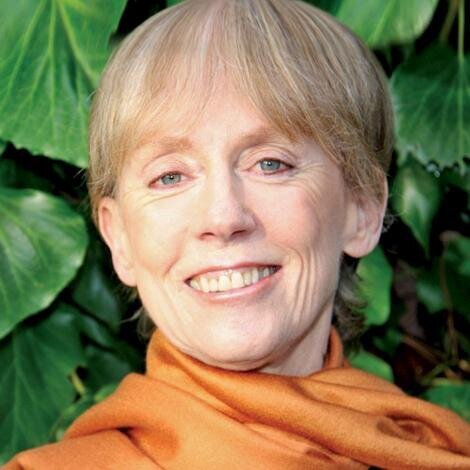The Challenge of Finding the Pause in Meditation
When you meditate, it’s always interesting to see what happens. In the beginning, grasping the concept of a pause, or as they call it, the madhya, was quite challenging. My teacher, Sally Kempton, advised me to follow the breath to its end. Between the in-breath and the out-breath, and between the out-breath and the in-breath, there would be a short pause. In that pause, there would be an opening.
The Evolution of Meditation Practice
Of course, I forced it, and tried and tried and was at a loss. She also told me to observe my thoughts and follow them to their very end. At the end and beginning of each thought stream, there would be a pause. I believed that there is never really a pause or an end to any of my thought streams, so I wasn’t sure when, or if, the gap would ever appear. As the years passed, I noticed that the more I sat for meditation, the longer those gaps or pauses became. Spaces emerged between thoughts and breaths. These pauses appeared with time, never when I tried to look for them. For me, I just had faith in meditation.
David Hawkins explains the pause like this:
“… with the Infinite Silence out of which thinkingness arises.
It is located not between but just before the emergence of thoughts.”
– Transcending the Levels of Consciousness by David R. Hawkins [pg. 341]
The Madhya: Beyond and Beneath Mental Fluctuations
Ask yourself, what happens when my stream of thoughts comes to an end? For most of us, such a question has never even been considered. However, by becoming aware of the energy from which thoughts arise, we find that indeed, the pause is the place that is actually the source of what our minds create. The madhya exists not only in between but also behind and underneath all the fluctuations of the mind.
Deepening the Meditation Experience: The Expansion of Madhya
Over the years, as I sat for meditation for longer periods, everything began to slow down, and the pauses in the thought stream became more pronounced and longer. At some point, the madhya became longer and started blending into the thought stream. The pause itself became the majority of the meditation. After that, the madhya, this pause, trickles into your life, allowing you to find yourself living in it. You find yourself living in the space between thoughts or in the space from which thinking arises. This is where we can access the Self or the ground of being, the consciousness that underlies and holds us all. The key is to never stop trying. When it comes to meditation, it’s like a boomerang: the more you put in, the stronger the return.
“The fractional pause in the flow of the breath or
in the flow of thoughts then opens out into the vastness of consciousness,
into what in Sanskrit is called the madhya (midpoint),
the center, the inner space where we experience our connection to the whole.”
– Meditation for the love of it: Enjoying your own deepest experience by Sally Kempton [pg. 37]
Experiencing the Pause in Everyday Life
Nowadays, I can identify this state more clearly in day-to-day life. A decade ago, I might not have recognized it at all. But consider this: where are the places beyond thought? Perhaps these places are found when we watch waves come ashore or when we are high up on a mountain, observing expansive natural surroundings. Maybe it’s while listening to the rustle of leaves on the trees. It could also happen when we look deeply into the eyes of our newborn baby or while belly laughing with a dear friend.
In all these moments, our thoughts slow down or dissolve enough to give us the chance to find ourselves in that pause.
The Modern Challenge: Filling Our Pauses
Today, we rarely have pauses or gaps in our thought activity. The pauses we do have are usually filled with either watching TV, reading the news, or scrolling on our phones. Many believe these activities are ways to relax, especially watching TV. However, if you observe a brain wave monitor while watching TV, you will see significant activity. Instead of relaxing, your brain is actually drained afterward. We all need a break from the constant barrage of thoughts and mind chatter. It’s important to find times to recharge your mind, and that’s why finding these pauses is crucial in maintaining some level of peace and joy.

A Simple Meditation Exercise
Pause and take one breath. Close your eyes. By taking one breath through your nose, you’ve already slowed down the pace of the world by a fraction. Listen. When you listen to the wind or the leaves rustling in the trees, you’ll find there is already a short pause in the mind stream. The mind is a funny thing; the more you feed it, the more active it becomes. And, the less attached you are to your thoughts, the less active and calmer the brain becomes.
Alternative Paths to the Pause
If you are not ready for traditional meditation, there are many ways to find this pause – this doorway to the underlying presence that sustains us all. In pranayama, one method to access this pause is during the retention between breaths. If you hold your breath for a quick moment, you will notice that your mind becomes still. In nature, simply pausing and listening to the sounds around you can immediately create a sense of synchronicity with the earth. This innate connection with the outdoors is intrinsic to our being. I like to stand by a lake or on a hill in mountain pose – a yoga pose where you stand straight with your arms by your side and your palms facing forward. If you are familiar with mountain pose, try going outside, adopting the pose, and just breathe. You will find a pause in an effortless way.
Embracing Everyday Moments of Presence
Many of us experience these moments daily without even realizing it, and without becoming a die-hard meditator like myself. It could be while watching a sunset, fishing on a lake, or laying a puzzle. When the mind slows and you find yourself in the present moment – that’s where it is. Make sure to become aware of it and cherish it, because in that awareness, you find the key to infinite joy.







